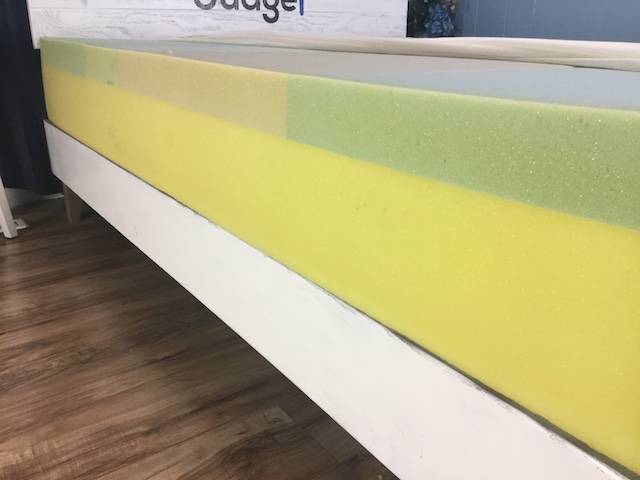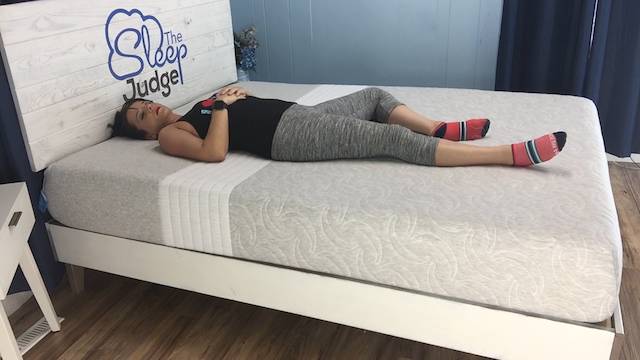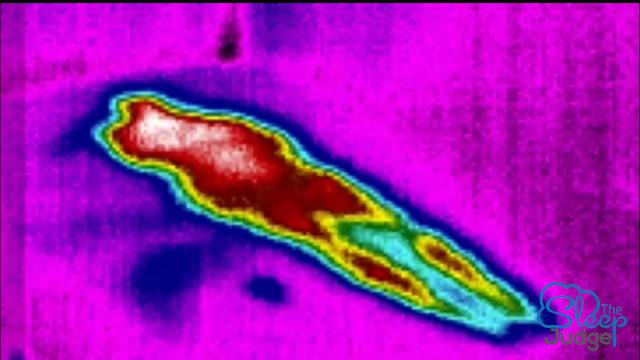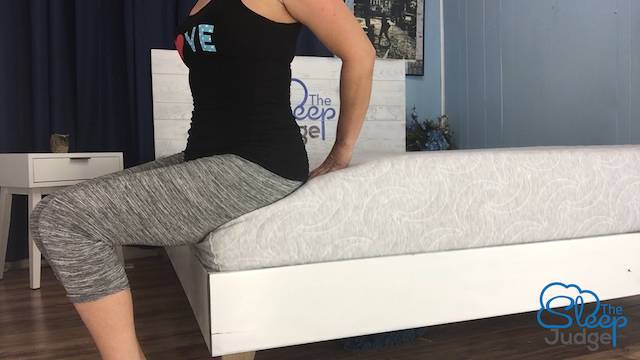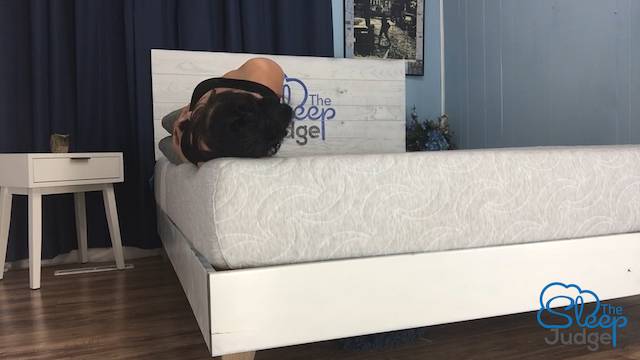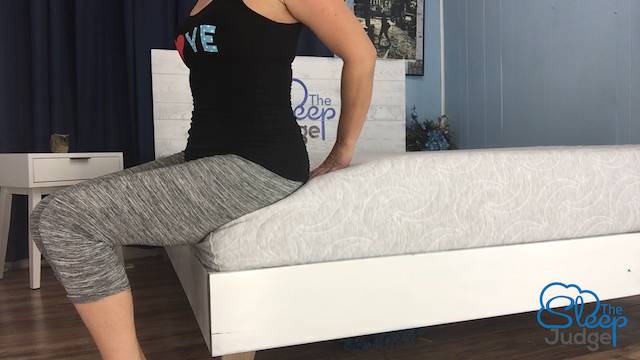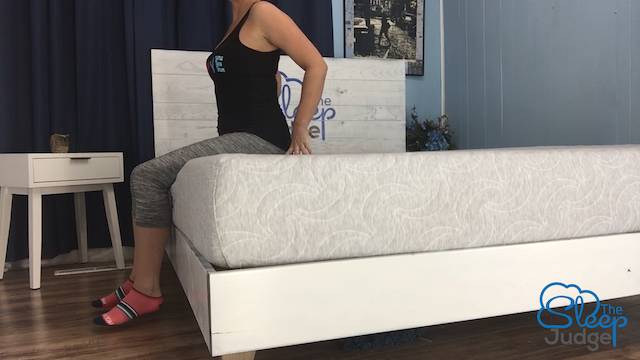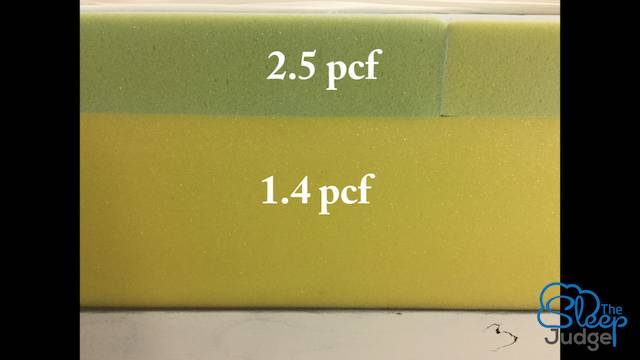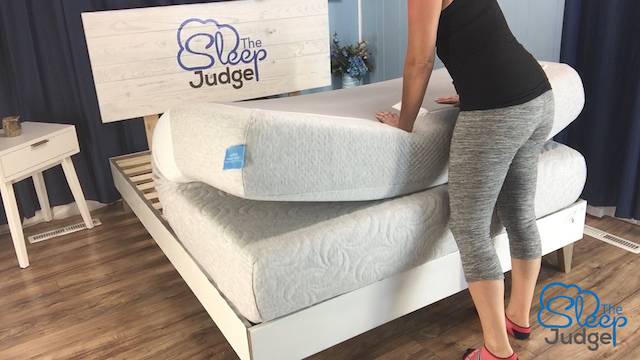Mattress shopping gets confusing with so many options, so we try to break things down and make it a little bit easier. If you suffer from aches and pains, especially when you wake up, today we’re taking a close look at the Level Sleep mattress.
This product has undergone over a decade of development and independent clinical trials and has shown to reduce pain by 57 percent. If you check out their website, you’ll see they’re endorsed by hundreds of chiropractors, so I was really excited to see what all the hype’s about.
Video Review
About Level Sleep: How It Works
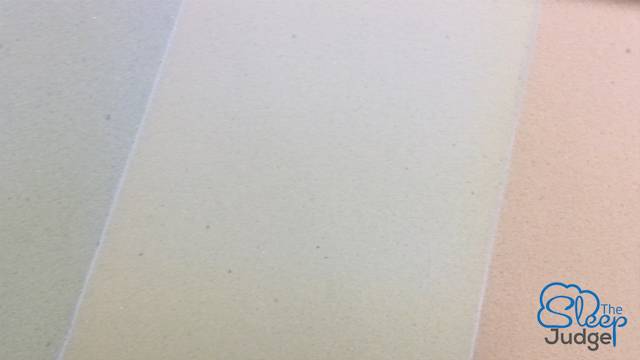
The Level Sleep inventors spent over 15 years doing extensive research and analyzing traditional designs to recognize common issues and fix them. With the encouragement of Stanford researchers, Level Sleep’s TriSupport® mattress is said to have an advanced ability to support the curves and weights of the body and provide pain-free sleep.
Single-Blind Sleep Trial
Level Sleep isn’t new to the industry. In fact, it was back in 2009 that they were performing an Institutional Review Board (IRB) approved, single-blind sleep trial designed by Clete Kushida, M.D., PhD. It involved 30 people who tested their current mattresses and compared them with the Level Sleep mattress.
It was revealed that TriSupport® technology allowed participants to:
- Fall asleep faster
- Experience less pain and stiffness upon waking
- Enjoy more energy and a better overall quality of sleep
Both subjective and objective data was gathered, allowing researchers to get a clear view of user experience.
If you want to learn more about the conception of Level Sleep and its clinically proven capabilities to keep you comfy, you can read more on their site. But, for now, let’s delve in and learn more about how it combines pressure relief, ease of movement, and overall comfort.
Level Sleep Layer Lineup

As you can see, I have removed the cover so we can take a look inside:
- It all kicks off with the top 3-inch layer of TriSupport® foam. It’s an open-cell material known to breathe well, and we’ll see how it works out in our heat transfer test here in a moment.
- This layer lineup only consists of two materials. The remaining 7 inches are made of polyfoam. The total mattress thickness is 10 inches.
Level Sleep Mattress Feel and Performance
The layer lineup isn’t very complicated, but that doesn’t mean it’s not strategic. Let’s take a moment to talk about what it feels like to lie on the Level Sleep mattress:
Main Points on Feel
- Level Sleep did a great job combining the initial plush feeling you want when you first lie down with the lift and support you need to keep from feeling stuck.
- According to the Institutional Review Board, it reduces tossing and turning by 34%, and I definitely think the TriSupport® firmness variations have to do with this. This feature could also prove beneficial for arthritis sufferers and those who often experience shoulder pain when they wake up.
- Side sleepers who suffer from back pain can benefit from the TriSupport® layer’s ability to reduce compressive and shearing forces that frequently impact this particular sleeping position.
- You can really pick up on how the TriSupport® foam’s use of firmness zoning prevents the burning sensation common when the increased weight in certain areas of the body compresses the soft tissue between the bones, and I definitely think this contributes to the reports of lowered tossing and turning.
If you find that you just can’t seem to find a comfortable position, I think Level Sleep could be a great fit.
Firmness & Contour
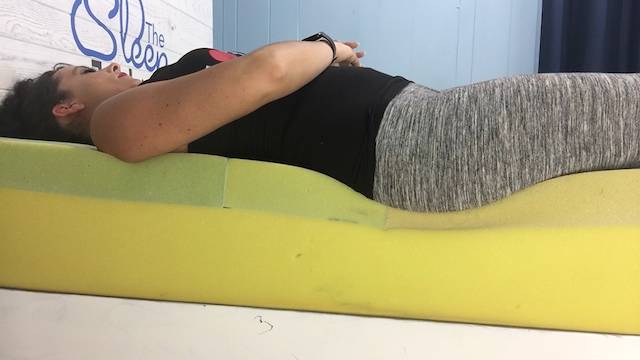
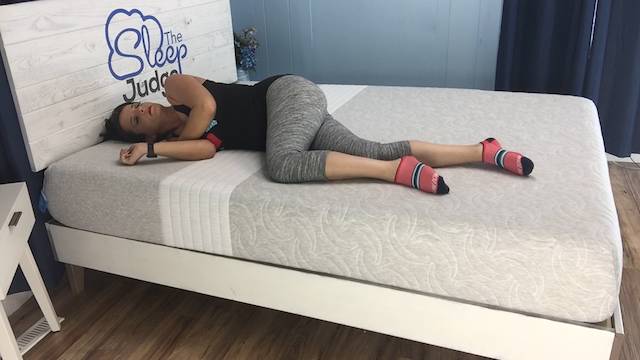
- The top 22 inches are plush to allow for good shoulder contour for side sleeping.
- The next 10 inches are firm, and this works to ensure proper lumbar support, a great consideration for back sleepers.
- The medium-firm foam begins right at the bottom of this band, and this is where you want to position your hips.
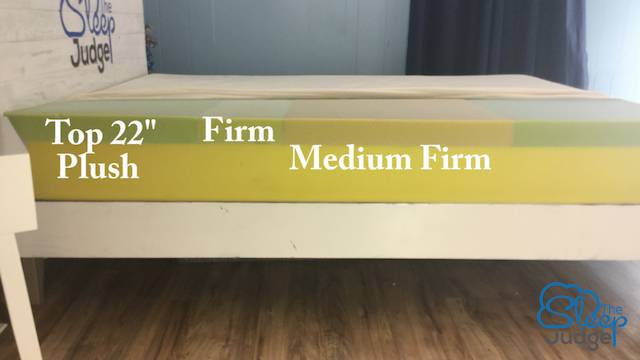
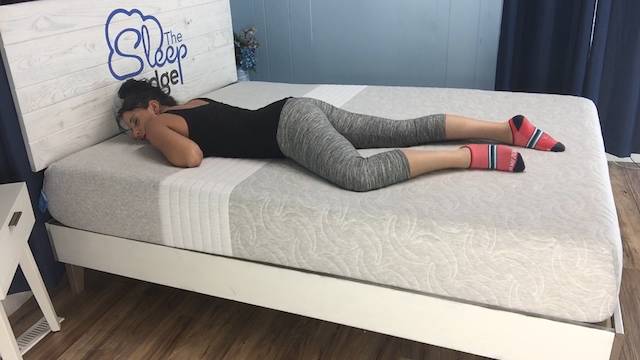
Level Sleep Motion Transfer Reduction
Although we often see a slight compromise in edge support with foam products, we typically expect them to perform well in terms of motion transfer. If you have a sleep partner, this is pretty important since you don’t want to feel the other person’s every move when you’re sleeping.
If you take a look at our video review above, you can watch as I drop a 20-pound medicine ball next to another of equal weight. I think it does a great job of showing motion transfer is minimal on this product. If you have a restless sleep partner, I always suggest a foam product first, and Level Sleep performs very well in this department.
It’s also notable that, despite the use of a visco foam in layer one, it features significant bounce. Level Sleep did a superior job overcoming this material type’s tendency to sink excessively.
Heat Transfer Reduction
Most companies incorporate measures to keep their mattress sleeping cool. In the case of Level
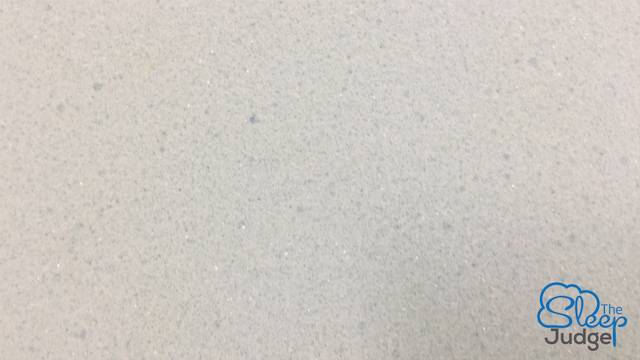
I used my thermal imaging camera to observe how quickly the Level Sleep two layer lineup would be able to cool off after I lied on it for a half-hour in controlled room temperature. This process takes right around 10 minutes on average, and Level Sleep only took 7 ½. minutes

Level Sleep Edge Support
I think the 7-inch base unit does a good job keeping me supported when I lie down, but I do sink in quite a bit when I sit on the edge. Again, this is pretty common in foam products. You can also see how I sink when I sit on the corner, basically bottoming out. Again, this is pretty common with this type of layer lineup, so that’s pretty much what I was expecting.
What’s this mean for you? If you have mobility issues or find yourself sitting on the edge a lot, it could be a deal-breaker. However, you’re going to likely have issues on other foam products. In your case, I always suggest taking a look for something that incorporates an innerspring unit for added support. For standard use, though, edge support is comparable to the competition and on par for this material type.
Level Sleep Durability Expectations
A lot of people get so caught up looking for a cheap mattress that they allow quality to slip through the cracks. You often end up spending more in the long run when you have to turn around and buy another mattress after just a few years, so we always take a moment to go through durability expectations.
To make this determination in a foam mattress, we need to look at the densities of each material. Since this information isn’t provided, I extracted square inch chunks of foam from the mattress and did the math myself.
For those of you who like to get into the nitty-gritty, here are my calculations:
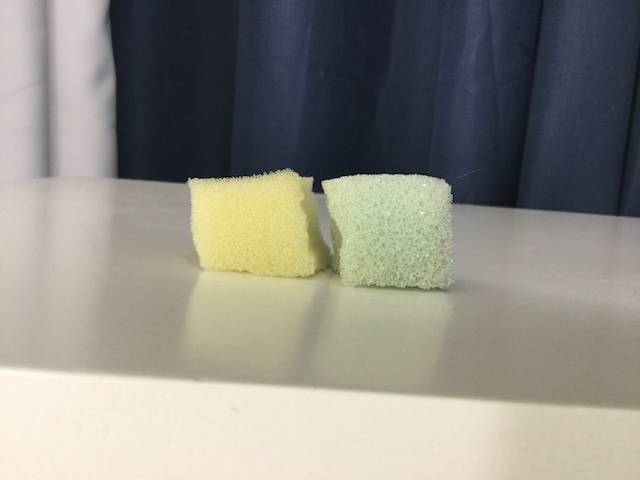
Scale measures grams
1 cubic inch to cubic feet = 0.000578704
1 gram = 0.00220462
Weight in grams x 0.00220462 = weight in lbs
-
- TriSupport®t® Foam
- .6395 g x 0.00220462
- 00140985449 lbs / 0.000578704
- 2.5 pcf
- Base Foam
- .3606 g x 0.00220462
- 0.000794985972 lbs / 0.000578704
- 1.4 pcf
- TriSupport®t® Foam
What do These Numbers Mean?
First, we must identify the foam type. The TriSupport® is a visco foam, and the highest quality will feature a density of four to five pounds per cubic foot. Of course, you usually have to pay at least $2,500 for a queen of this quality, and, if you have the money to do that, go for it.
The Comfort Zone Density
Level Sleep runs right around $1,000 for a queen, and the density of this top layer was around 2.5 pcf. For the price, this is about right. Since you exert the most direct wear and tear on this layer, this is where you really want good durability.
Since 2.5 is low compared to what’s out there, a great way to add durability is to purchase a latex topper to go with your mattress. Latex is one of the most durable materials on the market, and it can go a long way in helping your comfort zone last.
The Base Density
The support foam is made of polyfoam, and we want to see a density of at least 1.8 pcf in this layer. In Level Sleep, though, my cube measured out at right around 1.4 pcf. While there is room for error, we’re still quite a bit under that 1.8 pcf durability threshold. For the price, I’d like to see this number a little higher.
A Few Durability Tips
- If you carry a lot of weight, I think you may have trouble with premature sagging. This adds to the fact that, since this mattress is zoned, rotating for even wear and tear will throw off the firmness zones. Because of this, I’d recommend sleep partners switch spots once every three to four months to more evenly distribute weight.
- As with any mattress, I always recommend buying a water-resistant mattress protector. I just spoke with a viewer whose mattress is developing indents after three years. He’s struggling to take advantage of his warranty, which totally covers indents because there’s a stain on the cover. Don’t let that happen to you.
- Level Sleep doesn’t recommend removing the cover, but you can spot clean with a mild detergent or even hand soap.
- You can also fold your Level Sleep mattress if you need to transport it, but don’t leave it in this position for an extended period of time.
Maintenance, Protection, Care & Warranty
I like that Level Sleep does offer a Forever trial, and this protects against problems with the quality of construction and materials. You also get a 365-night sleep trial to make sure you like it before you’re committed.
During your sleep trial, you want to make sure you’re maximizing the experience. Here’s some information that’s good to know once you receive your order:
Cost
It can be hard to find a quality mattress under $1,000. As we examined the densities, I think we confirmed the price is very well aligned with quality. Financing through Affirm is available for qualified buyers.
Here’s what you can expect to pay:
- Twin- $799
- Twin XL- $899
- Full- $1,099
- Queen- $1,199
- King- $1,399
- California King- $1,399
You may want to check out: Level Sleep Coupon
Level Sleep Reviews & Feedback
We always do our best to provide honest, real-life feedback to help you make an informed decision. However, considering the subjective nature of some of my feedback, I took a look around the Internet to see what other users have had to say about the Level Sleep mattress:
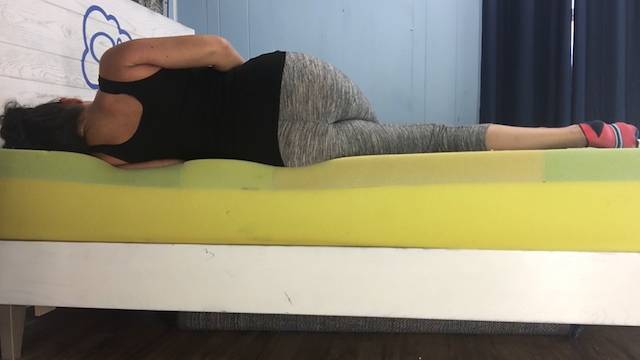
- Reduces aches and pains
- Even support and contour across the sleep surface
- Sleeps cool
- Great bounce for a visco sleep surface
- Really easy to move around
- Excellent motion isolation
- Firmness zoning works to accommodate all three sleeping positions
- Reports of reduction in tossing and turning
CONS
- Some complaints of premature sagging
- Not a great fit for someone who carries a lot of weight
- Not for people who aren’t between 4’2” and 7’ tall
- Low edge support
Who We Recommend the Level Sleep Mattress For
At the end of the day, is the Level Sleep mattress gonna be right for you?
- I think they really nailed the firmness zoning, so, if you struggle to find a mattress that offers even support and contour, this could be a great fit.
- Some find it to be a little on the firm end, so, if you don’t carry much weight, you may do better with something plusher. However, the plusher setting in the shoulder area does a great job offering proper contour.
- Hot sleepers will appreciate Level Sleep’s above-average heat transfer capability.
- I appreciate the fact that it has ten years of development and clinical testing under its belt.
Our Final Verdict

Overall, I think this product is a great selection if you’re shopping in the $1,000 range and want something accommodating for the average person. There are a couple of minor issues to keep in mind, but they only affect certain shoppers:
- The firmness zoning works best for people between 4’ 2” and 7’ tall. This range covers most people, but, if you’re outside this spectrum, you won’t be able to maximize the zoning benefits.
-
If you’re looking for a product built to last more than six or seven years, you may have better luck with something with higher density in the foam layers.
If you’ve struggled to find even contour and support across your sleep surface, I think Level Sleep’s unique zoning could offer the right solution.
Frequently Asked Questions
Is a Foundation Needed?
Level Sleep is compatible with all frames, and it works best when you use one. This provides the best airflow to keep it sleeping cool and keep things clean. Mold isn’t covered in the warranty, and using a frame prevents its development. For all these reasons, we suggest using a foundation.
Is a Mattress Pad or Protector Needed?
A quality mattress protector can do a lot in terms of improving durability, but you don’t have to use one.
Does it Work on Adjustable Beds?
Yes
Are Returns Hassle-Free?
100% full refund during sleep trial
What’s the Warranty?
Lifetime
Is There A Trial Available?
365 nights
Does It Need To Be Rotated
No, because it will throw off the zoning, but sleep partners should switch sides every few months

